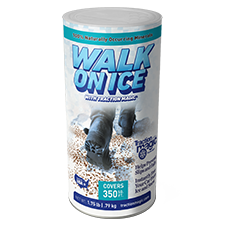How To Remove White Stains On Concrete Caused By Salt?
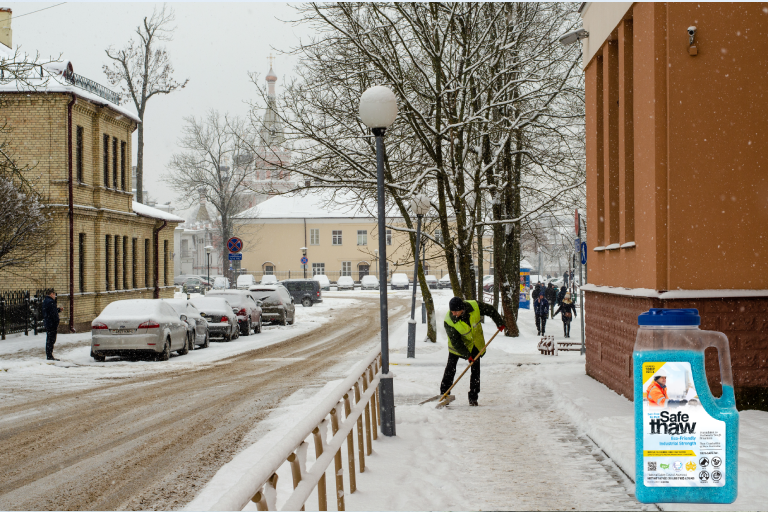
White stains on concrete caused by the salt for the driveway can be unsightly. The good news is that they’re easy to remove if you know what products to use and how to apply them. Here are some ways to remove white stains from concrete caused by salt:
How to Remove White Stains on Concrete Caused by Salt
Salt stains on concrete can leave unsightly white deposits that mark the appearance of driveways, sidewalks, and patios. These stains, often caused by deicing salts, can also signal underlying issues like moisture infiltration or chemical reactions. Understanding how to remove and prevent these stains not only improves your concrete’s aesthetics but also extends its lifespan. This guide will explore the causes, removal methods, and preventative strategies to protect your concrete from salt damage.
Here are some ways to remove white stains from concrete caused by salt:
Understanding Efflorescence: Causes and Identification
Efflorescence is a common phenomenon that occurs when soluble salts within concrete migrate to the surface. This process is often triggered by moisture, which dissolves salts and carries them to the surface as water evaporates. The result is a white, powdery residue that many homeowners mistake for surface damage.
Identifying Efflorescence
Efflorescence typically appears as streaks or patches of white residue on concrete surfaces. It’s important to differentiate it from other types of stains, such as lime deposits or mold, which may require different removal methods. Efflorescence is generally dry and powdery, whereas lime stains tend to be hard and chalky.
Causes of Efflorescence
- Moisture Exposure: Excess water entering the concrete through cracks or unsealed surfaces.
- High Salt Content: Salts from deicing products or the surrounding environment penetrating the concrete.
- Inadequate Sealing: Unsealed or poorly sealed concrete allows moisture and salts to interact freely.
By understanding the root cause of efflorescence, you can take the necessary steps to remove and prevent its recurrence.
Safe Thaw
Safe Thaw was created as the ice management solution for tough winter environments. Ideal in commercial and industrial properties, shops, government agencies, bridges, and construction.
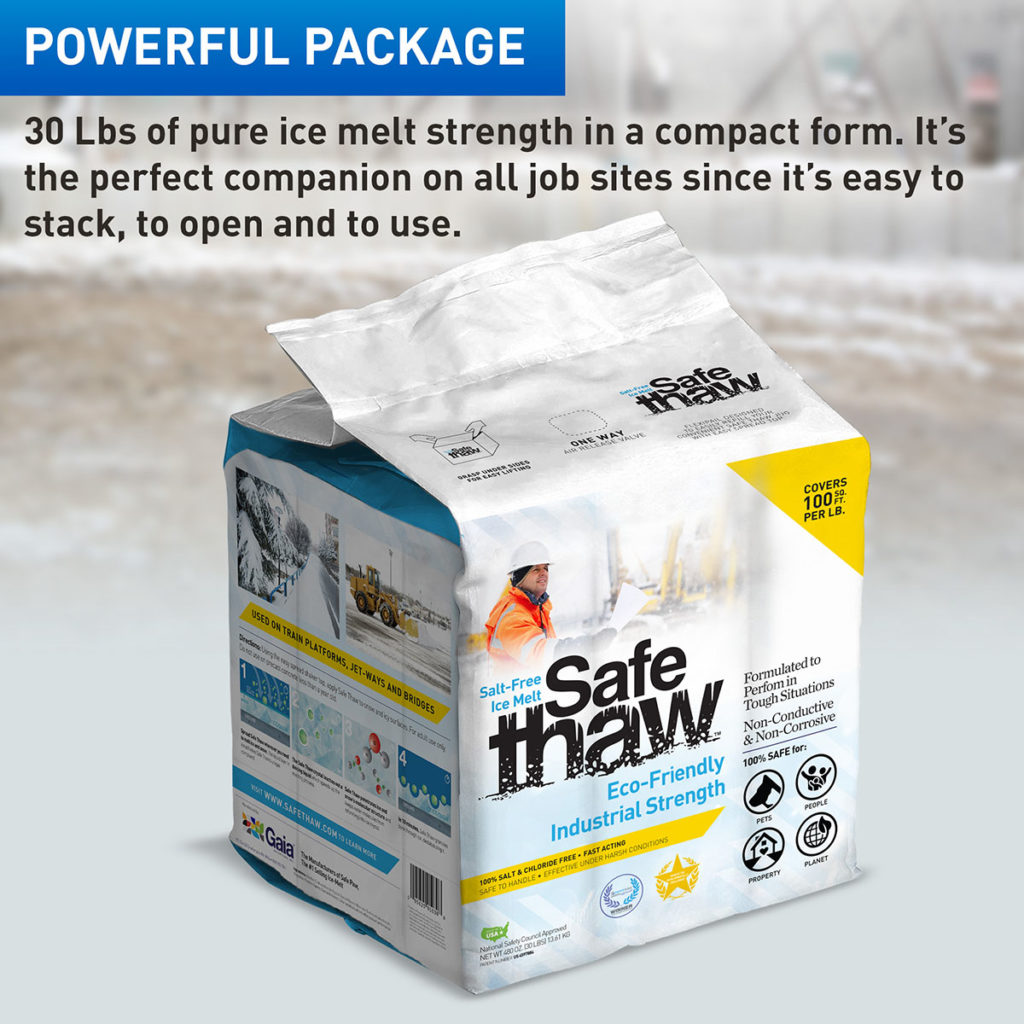
Safe Thaw
Safe Thaw was created as the ice management solution for tough winter environments. Ideal in commercial and industrial properties, shops, government agencies, bridges, and construction.
Here Are Some Ways To Remove White Stains From Concrete Caused By Salt For The Driveway:
- Use A Solution Of 50/50 Water And Vinegar, Scrub It On The Stains, Then Rinse With A Garden Hose.
To remove the white stains, you’ll need a solution of 50/50 water and vinegar. Vinegar is an acid, and water is a base—the two react to form salt and water. The salt for the driveway will dissolve in the water, leaving your concrete clean! This method is concrete-safe.
- Mix Up A Thick Mixture Of Baking Soda And Hydrogen Peroxide, Rub It On The Stains, Then Let It Sit Overnight Before Washing It Off.
Mix 1 cup of baking soda and 1 tablespoon of hydrogen peroxide. Rub the mixture onto the stains, let it sit overnight, then sponge it off in the morning.
If you don’t have any hydrogen peroxide on hand, you can also use club soda or lemon juice instead. Just be sure to treat the area as soon as possible—if left untreated for too long, salt for the driveway stains can become extremely difficult to remove. This method is concrete-safe.
- Make A Paste With Distilled Water And Muriatic Acid, Apply The Paste To The Stains, Wait 30 Minutes, Then Wash It Off.
Soak the concrete in a solution of one cup of muriatic acid and four gallons of water for 30 minutes, then wash it off with clean water. Wear protective clothing and gloves when using this method, because muriatic acid is a strong acid that can cause chemical burns if it comes into contact with your skin or eyes. Do not mix this solution with any other chemicals, and do not use it on granite or marble surfaces; its effects on those materials are unknown at this time. Also, avoid applying the acid if the concrete has been sealed; doing so may damage its surface sealer and cause more staining to occur in future years.
100% salt & chloride-free, fast acting Ice Management Solution
Preventative Measures to Avoid Salt Stains on Concrete
Preventing salt stains begins with addressing the factors that contribute to their formation.
Apply High-Quality Sealers
Sealers act as a protective barrier, preventing water and deicing salts from penetrating the concrete surface. Choose a durable, water-repellent sealer and apply it every two to three years for optimal results.
Ensure Proper Drainage
Water pooling on your driveway increases the risk of efflorescence and other damage. Proper drainage systems, such as sloped surfaces or French drains, help divert water away from your concrete.
Limit Deicing Salt Use
Excessive use of deicing salts contributes to staining and surface damage. Opt for a concrete safe ice melter, such as Safe Thaw, which is chloride-free and less likely to cause scaling or spalling.
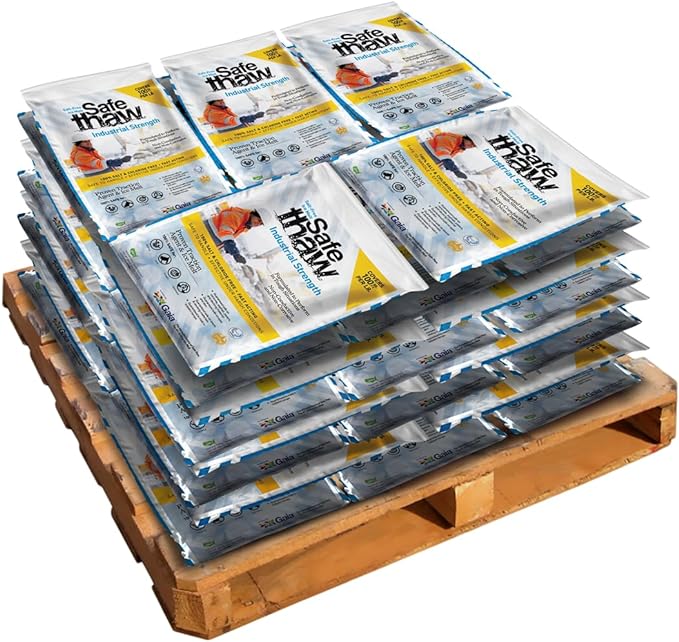
40 Bags
Safe Paw Thaw Industrial Strength Salt-Free Pet Safe Snow Ice Melter and Traction Agent for Concrete, Asphalt, Decks, Lawns, and More, 43 Pound Bag- 40 Bags
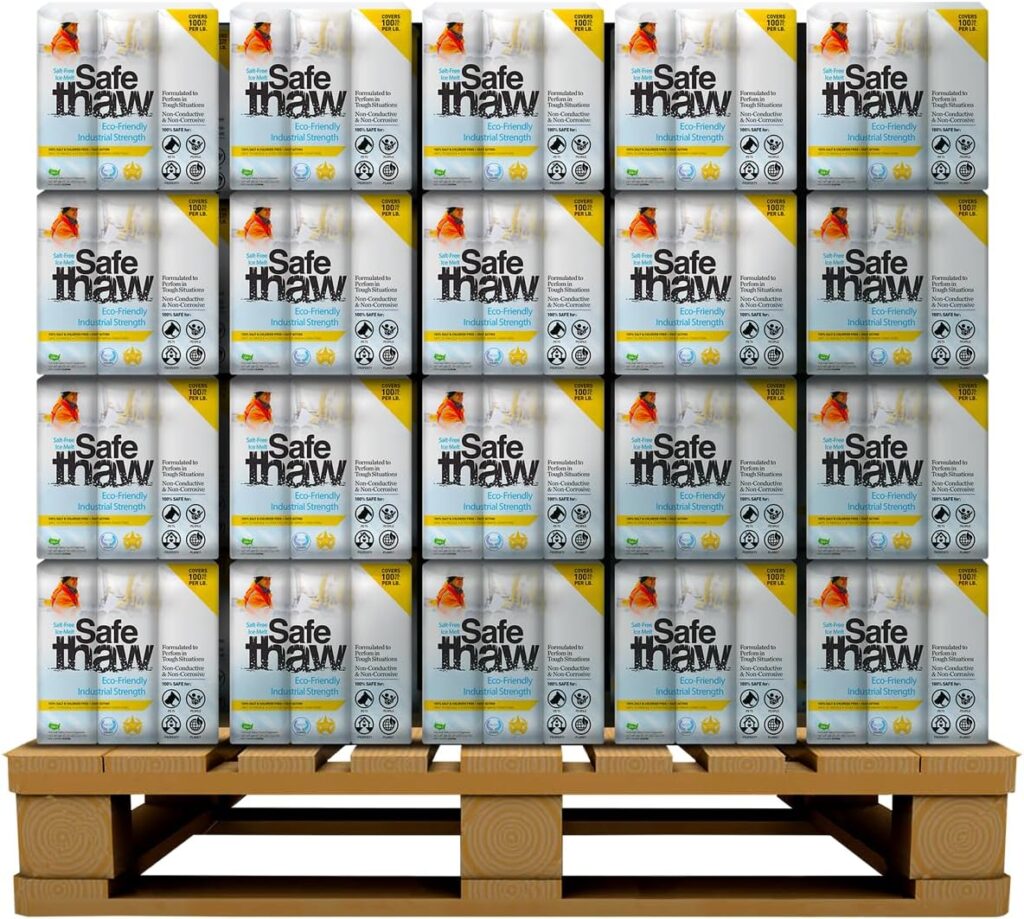
100 Boxes
Safe Thaw Industrial Strength 100% Salt/Chloride-Free, Pet/Paw-Safe Snow & Ice Melter and Traction Agent. Use on Concrete, Asphalt, Roofs & On Any Surface, 30 Pound FlexiPail- 100 Boxes
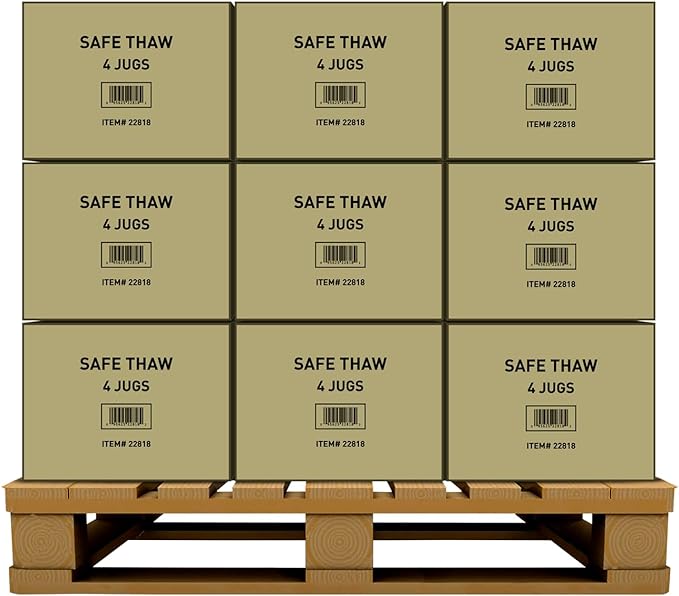
105 Jugs
Safe Thaw Concrete Safe 100% Salt-Free, Pet Safe Snow and ice Melter, Industrial Strength, Chloride-Free, and Traction Agent. Use on Asphalt, Roofs & On Any Surface, 10 Pound Jug- 105 Jugs
Environmental Impact of Deicing Salts on Concrete
Deicing salts are notorious for their detrimental effects on concrete surfaces.
Contribution to Freeze-Thaw Damage
Salts lower the freezing point of water, causing repeated freeze-thaw cycles. This process increases internal pressure within the concrete, leading to cracks and surface scaling.
Chemical Reactions with Concrete
Chloride-based salts, such as sodium chloride and calcium chloride, chemically react with concrete, weakening its structure over time. This reaction can accelerate the development of spalling, where chunks of concrete break away.
Environmental Concerns
Runoff from deicing salts contaminates nearby soil and water sources, affecting plant growth and aquatic ecosystems. Choosing environmentally friendly alternatives helps protect both your driveway and the environment.
Alternative Deicing Methods to Protect Concrete Surfaces
Reducing reliance on traditional deicing salts not only minimizes stains but also extends the lifespan of your concrete.
Non-Corrosive Deicing Agents
Products like Safe Thaw are effective alternatives to traditional salts. These ice melt safe for wood decks and pets are gentle on concrete and are environmentally friendly. Safe Thaw works by preventing ice from bonding to surfaces, making it easier to remove without causing damage.
Mechanical Snow Removal Techniques
Using tools like plastic-edged shovels or snow blowers with adjustable height settings minimizes the need for deicing agents. Clearing snow promptly after a snowfall prevents it from compacting into ice, reducing the need for chemical treatments.
Sand for Traction
While sand and products like Walk On Ice by Gaia don’t melt ice, they provide traction on slippery surfaces and can be swept away easily once the ice melts. This eco-friendly method is particularly useful for areas prone to heavy snowfall.
Removing White Stains from Concrete
If salt stains have already appeared on your concrete, there are several effective methods to remove them.
Simple Cleaning with Water and Brush
Start by scrubbing the affected area with warm water and a stiff-bristled brush. This method is often sufficient for mild stains caused by surface deposits.
Use a Vinegar Solution
Mix equal parts of vinegar and water to create a mild acidic solution. Apply it to the stains, let it sit for 10–15 minutes, and scrub with a brush. Rinse thoroughly with clean water to remove any residue.
Commercial Efflorescence Removers
For stubborn stains, use a commercial efflorescence remover specifically designed for concrete. Follow the manufacturer’s instructions carefully to avoid damaging the surface.
Prevent Recurrence
After cleaning, apply a concrete sealer to protect against future stains and enhance the appearance of your driveway.
Considering Concrete Driveway Cost and Maintenance
Investing in a concrete driveway is a long-term decision, with costs typically ranging from $5 to $15 per square foot depending on size and finish. Maintaining your driveway with preventative measures, such as sealing and using concrete safe ice melter, ensures you get the most out of your investment.
Conclusion
Salt stains on concrete, while unsightly, are manageable with the right approach. Understanding efflorescence and its causes allows for effective removal and prevention strategies. By using eco-friendly deicing products, applying sealers, and maintaining proper drainage, you can protect your driveway from future damage.
Whether you’re addressing existing stains or planning preventative measures, these steps ensure your driveway remains durable, safe, and visually appealing for years to come. With proper care, you’ll not only save on concrete driveway costs but also contribute to a more sustainable environment.
Try Also Our Other Winter Safety Products:
Safe Paw
The Original and #1 Selling Pet and Child Safe Ice Melt for over 20 years. Guaranteed environmentally safe –It won’t harm animals or children, and it won’t damage your property. That’s Safe Paw. Safe Paw can change how winter affects our planet.

Walk On Ice
The handy disposable canister can be taken everywhere, with the same 100% naturally occurring minerals that provide instant traction on ice or snow. Use it on sidewalks, steps, or as an instant traction agent for your car.
